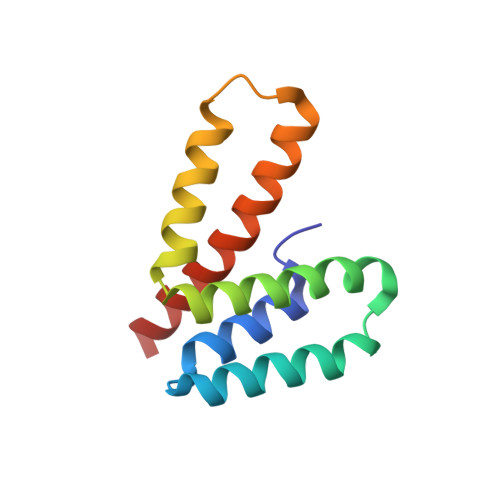Three-dimensional protein fold determination from backbone amide pseudocontact shifts generated by lanthanide tags at multiple sites
Yagi, H., Pilla, K.B., Maleckis, A., Graham, B., Huber, T., Otting, G.(2013) Structure 21: 883-890
- PubMed: 23643949
- DOI: https://doi.org/10.1016/j.str.2013.04.001
- Primary Citation of Related Structures:
2M66 - PubMed Abstract:
Site-specific attachment of paramagnetic lanthanide ions to a protein generates pseudocontact shifts (PCS) in the nuclear magnetic resonance (NMR) spectra of the protein that are easily measured as changes in chemical shifts. By labeling the protein with lanthanide tags at four different sites, PCSs are observed for most amide protons and accurate information is obtained about their coordinates in three-dimensional space. The approach is demonstrated with the chaperone ERp29, for which large differences have been reported between X-ray and NMR structures of the C-terminal domain, ERp29-C. The results unambiguously show that the structure of rat ERp29-C in solution is similar to the crystal structure of human ERp29-C. PCSs of backbone amides were the only structural restraints required. Because these can be measured for more dilute protein solutions than other NMR restraints, the approach greatly widens the range of proteins amenable to structural studies in solution.
Organizational Affiliation:
Research School of Chemistry, Australian National University, Canberra, ACT 0200, Australia.














